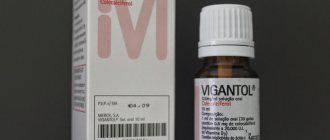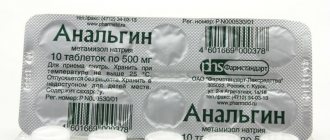Side effect
Side effect associated with the main effect of the drug: hypoglycemia.
Severe hypoglycemia can lead to loss of consciousness and (in exceptional cases) death.
Allergic reactions: local allergic reactions are possible - hyperemia, swelling or itching at the injection site (usually disappear within a period of several days to several weeks); systemic allergic reactions (occur less frequently, but are more serious) - generalized itching, difficulty breathing, shortness of breath, decreased blood pressure, increased heart rate, increased sweating. Severe cases of systemic allergic reactions can be life-threatening.
Other: the likelihood of developing lipodystrophy is minimal.
Barriers to insulin therapy and unmet needs: focus on hypoglycemia
Several barriers remain to the adoption of insulin and its optimal use in clinical practice, both at the patient and clinician level. The most common reasons for refusing to start insulin therapy in patients with type 2 diabetes are:
- fear of hypoglycemia,
- weight gain,
- discomfort associated with the need for regular blood tests,
- pain from injections,
- the opinion that insulin therapy is a complex and labor-intensive process.
Adherence to insulin therapy, however, is more influenced by factors such as health insurance structure and employment.
Fear of hypoglycemia not only influences the decision to initiate insulin therapy, but it may also compromise the adequacy of glycemic control.
It has been reported that most physicians would treat patients in a more aggressive manner without adequate glucose control if not for concerns about hypoglycemia.
Burden of hypoglycemia in patients with diabetes receiving insulin therapy
Hypoglycemia is a significant side effect of diabetes therapy, as it
- worsens the quality of life of patients.
Observational studies show that
- hypoglycemia occurs in 42.89 cases/patient-year with type 1 diabetes,
- 16.36 cases/patient-year in patients with type 2 diabetes receiving insulin therapy.
The incidence of severe hypoglycemia is approximately
- 1.15 cases/patient-year and can reach 3.2 cases/patient-year for type 1 diabetes;
- 0.7 cases/patient-year in patients with type 2 diabetes receiving insulin therapy.
Nocturnal hypoglycemia that occurs during sleep is especially dangerous because patients are unlikely to recognize the symptoms or wake up during the episode.
- The DCCT study reported that 43% and 55% of all hypoglycemic and severe hypoglycemic events, respectively, occurred during sleep.
- A large online survey conducted in the United States among 7,239 participants with type 2 diabetes (28.7% on insulin therapy) showed that hypoglycemia interfered with social activity,
- caused more absenteeism,
- decrease in overall labor productivity,
- negatively affected the overall quality of life.
- with losses ranging from U$ 15.26 to U$ 93.47
- 2108 respondents (32.8% with type 1 diabetes and 67.2% with type 2; 74.2% receiving insulin) reported that the frequency of hypoglycemic episodes significantly affected sleep and functional status the next day, 60.7% reported moderate to severe consequences .
- A longitudinal study of 16,667 older patients with type 2 diabetes (mean age 65 years; 35% receiving insulin) after 27 years showed an increased risk of dementia among patients with hypoglycemic episodes, with risk increasing as the number of hypoglycemic episodes increased.
The frequency of hypoglycemic episodes may lead patients to avoid taking medications, with significant reductions or even discontinuation of insulin doses after a hypoglycemic event, which negatively affects glycemic control.
Release form, packaging and composition of the drug Humulin® M3
suspension for subcutaneous administration that separates, forming a white precipitate and a clear, colorless or almost colorless supernatant; the sediment is easily resuspended with gentle shaking.
| 1 ml | |
| biphasic insulin (human genetically engineered) | 100 IU |
Excipients: metacresol - 1.6 mg, glycerol - 16 mg, liquid phenol - 0.65 mg, protamine sulfate - 0.244 mg, sodium hydrogen phosphate - 3.78 mg, zinc oxide - 0.011 mg, liquid water - up to 1 ml, hydrochloric acid solution 10 % - qs to pH 6.9-7.8, sodium hydroxide solution 10% - qs to pH 6.9-7.8.
3 ml - cartridges (5) - blisters (1) - cardboard pack. 3 ml - cartridge built into the KwikPen™ syringe pen (5) - cardboard pack.
Clinical and pharmacological group: Human insulin of medium duration of action with rapid onset of action
Pharmacotherapeutic group: Hypoglycemic agent - a combination of short- and medium-acting insulins
Drug interactions
The hypoglycemic effect of Humulin M3 is reduced by oral contraceptives, corticosteroids, thyroid hormone preparations, thiazide diuretics, diazoxide, tricyclic antidepressants.
The hypoglycemic effect of Humulin M3 is enhanced by oral hypoglycemic drugs, salicylates (for example, acetylsalicylic acid), sulfonamides, MAO inhibitors, beta-blockers, ethanol and ethanol-containing drugs.
Beta-blockers, clonidine, reserpine can mask the symptoms of hypoglycemia.
Pharmaceutical interactions
The effects that occur when human insulin is mixed with animal insulins or human insulin from other manufacturers have not been studied.
Development of insulin therapy
- About 382 million people worldwide suffer from diabetes mellitus (DM), type 2 DM accounts for 85-95% of all cases.
- For patients with type 2 diabetes, the use of insulin therapy is an option as both initial and additional therapy for those who have not achieved glycemic control when taking oral glucose-lowering drugs.
Insulin was first used in diabetic patients in the 1920s, but the first commercial preparations contained various impurities and associated potential complications.
In 1930, protamine-zinc insulin was developed, which resulted in delayed absorption and a longer duration of action, thereby reducing the number of insulin doses required for insulin replacement therapy.
Neutral protamine Hagedorn (NPH), the main basal insulin throughout the 20th century, was produced in 1946.
In the early 1980s, new long-acting insulin analogues, Glargine and Detemir, appeared, which were characterized by:
- less variability of glycemia during the day,
- longer duration of action,
- administration - 1 time per day.
The search for the ideal insulin regimen is still ongoing, striving to provide optimal glycemic control with minimal side effects and improvement in patient condition.
Overdose
Symptoms: hypoglycemia, accompanied by lethargy, increased sweating, tachycardia, pale skin, headache, trembling, vomiting, confusion.
Under certain conditions, such as long-term diabetes or intensive control of diabetes, the warning symptoms of hypoglycemia may change.
Treatment: Mild hypoglycemia can usually be treated with oral glucose (dextrose) or sugar. Adjustments to your insulin dose, diet, or physical activity may be necessary.
Correction of moderate hypoglycemia can be carried out using intramuscular or subcutaneous administration of glucagon, followed by oral carbohydrates.
Severe conditions of hypoglycemia, accompanied by coma, convulsions or neurological disorders, are treated with intramuscular or subcutaneous administration of glucagon or intravenous administration of a concentrated solution of glucose (dextrose). After regaining consciousness, the patient must be given food rich in carbohydrates to avoid re-development of hypoglycemia.
pharmachologic effect
DNA recombinant human insulin with an intermediate duration of action. It is a two-phase suspension (30% Humulin Regular and 70% Humulin NPH).
The main effect of the drug is the regulation of glucose metabolism. In addition, it has an anabolic effect. In muscle and other tissues (with the exception of the brain), insulin causes rapid intracellular transport of glucose and amino acids and accelerates protein anabolism. Insulin promotes the conversion of glucose into glycogen in the liver, inhibits gluconeogenesis, and stimulates the conversion of excess glucose into fat.



